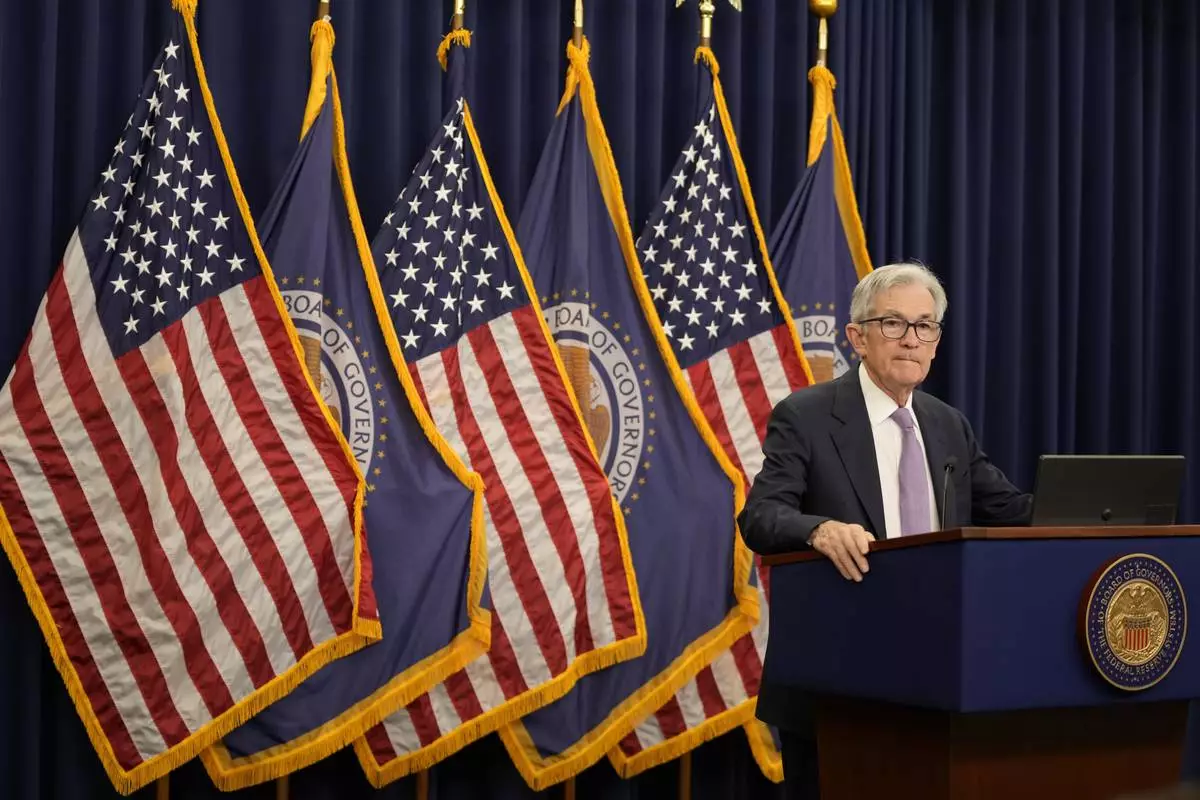EAST RUTHERFORD, N.J. (AP) — After sitting out a game with a heel injury, Drew Lock is expected back at quarterback when the New York Giants face the Falcons in Atlanta on Sunday.
Coach Brian Daboll said Wednesday that Lock has recovered and will start when the Giants (2-12) try to snap a franchise-record-tying nine-game losing streak.
Click to Gallery
New York Giants quarterback Tommy DeVito (15) passes against the Baltimore Ravens during the first quarter of an NFL football game, Sunday, Dec. 15, 2024, in East Rutherford, N.J. (AP Photo/Frank Franklin II)
New York Giants quarterback Tim Boyle steps back to pass against the Baltimore Ravens during the third quarter of an NFL football game, Sunday, Dec. 15, 2024, in East Rutherford, N.J. (AP Photo/Seth Wenig)
New York Giants quarterback Drew Lock (2) passes under pressure against the New Orleans Saints during the third quarter of an NFL football game, Sunday, Dec. 8, 2024, in East Rutherford, N.J. (AP Photo/John Munson)
New York Giants quarterback Drew Lock (2) reacts during the fourth quarter of an NFL football game against the New Orleans Saints, Sunday, Dec. 8, 2024, in East Rutherford, N.J. (AP Photo/Adam Hunger)
New York Giants quarterback Drew Lock (2) passes against the New Orleans Saints during the fourth quarter of an NFL football game, Sunday, Dec. 8, 2024, in East Rutherford, N.J. (AP Photo/Adam Hunger)
New York has been going back and forth at quarterback since benching and then releasing Daniel Jones coming off a bye week.
Tommy DeVito started against Tampa Bay on Nov. 24 and injured his right forearm late in the 30-7 loss. Lock started and lost against Dallas on Thanksgiving and a 14-11 decision against New Orleans, a game in which he hurt his heel and elbow but finished.
DeVito returned this past weekend against Baltimore and sustained a concussion late in the first half of the 35-14 loss. Recently signed Tim Boyle played the rest of the way.
“You go out there and do the best you can,” Daboll said of the uncertainty at quarterback this past month. “Prepare the guys. The three of those guys work hard. Try to take in the game plan. Go out there and practice. So, they all got to be ready.”
DeVito is still in the concussion protocol. Daball believes he could be ready to be the backup on Sunday against the Falcons (7-7), who are making a quarterback switch of their own. Rookie Michael Penix Jr. is replacing Kirk Cousins.
AP NFL: https://apnews.com/hub/nfl

New York Giants quarterback Tommy DeVito (15) passes against the Baltimore Ravens during the first quarter of an NFL football game, Sunday, Dec. 15, 2024, in East Rutherford, N.J. (AP Photo/Frank Franklin II)

New York Giants quarterback Tim Boyle steps back to pass against the Baltimore Ravens during the third quarter of an NFL football game, Sunday, Dec. 15, 2024, in East Rutherford, N.J. (AP Photo/Seth Wenig)

New York Giants quarterback Drew Lock (2) passes under pressure against the New Orleans Saints during the third quarter of an NFL football game, Sunday, Dec. 8, 2024, in East Rutherford, N.J. (AP Photo/John Munson)

New York Giants quarterback Drew Lock (2) reacts during the fourth quarter of an NFL football game against the New Orleans Saints, Sunday, Dec. 8, 2024, in East Rutherford, N.J. (AP Photo/Adam Hunger)

New York Giants quarterback Drew Lock (2) passes against the New Orleans Saints during the fourth quarter of an NFL football game, Sunday, Dec. 8, 2024, in East Rutherford, N.J. (AP Photo/Adam Hunger)
WASHINGTON (AP) — The Federal Reserve cut its key interest rate Wednesday by a quarter-point — its third cut this year — but also signaled that it expects to reduce rates more slowly next year than it previously envisioned, largely because of still-elevated inflation.
The Fed’s 19 policymakers projected that they will cut their benchmark rate by a quarter-point just twice in 2025, down from their previous estimate in September of four rate cuts. Their new quarterly projections suggest that consumers may not enjoy much lower rates next year for mortgages, auto loans, credit cards and other forms of borrowing.
Fed officials have underscored that they are slowing their rate reductions as their benchmark rate nears a level that policymakers refer to as “neutral” — the level that is thought to neither spur nor hinder the economy. Wednesday's projections suggest that policymakers may think they are not very far from that level. Their benchmark rate stands at 4.3% after Wednesday’s move, which followed a steep half-point reduction in September and quarter-point cut last month.
This year’s Fed rate reductions have marked a reversal after more than two years of high rates, which largely helped tame inflation but also made borrowing painfully expensive for American consumers.
But now, the Fed is facing a variety of challenges as it seeks to complete a “soft landing” for the economy, whereby high rates manage to curb inflation without causing a recession. Chief among them is that inflation remains sticky: According to the Fed’s preferred gauge, annual inflation was 2.8% in October, the same as in March and still persistently above the central bank’s 2% target.
At the same time, the economy is growing briskly, which suggests that higher rates haven’t much restrained the economy. As a result, some economists — and some Fed officials — have argued that borrowing rates shouldn’t be reduced much more for fear of overheating the economy and re-igniting inflation. On the other hand, the pace of hiring has cooled significantly since 2024 began, a potential worry because one of the Fed’s mandates is to achieve maximum employment.
The unemployment rate, while still low at 4.2%, has risen nearly a full percentage point in the past two years. Concern over rising unemployment contributed to the Fed’s decision in September to cut its key rate by a larger-than-usual half point.
On top of that, President-elect Donald Trump has proposed a range of tax cuts — on Social Security benefits, tipped income and overtime income — as well as a scaling-back of regulations. Collectively, these moves could stimulate growth. At the same time, Trump has threatened to impose a variety of tariffs and to seek mass deportations of migrants, which could accelerate inflation.
Chair Jerome Powell and other Fed officials have said they won’t be able to assess how Trump’s policies might affect the economy or their own rate decisions until more details are made available and it becomes clearer how likely it is that the president-elect’s proposals will actually be enacted. Until then, the outcome of the presidential election has mostly heightened the uncertainty surrounding the economy.
“I’ve got the least amount of conviction about what will happen with the economy over the next 12 months than I’ve had in years,” said Subadra Rajappa, head of U.S. rates strategy at Societe Generale. “This is going to be a work in progress as things evolve.”
Such uncertainty was underscored by the quarterly economic projections the Fed issued Wednesday. The policymakers now expect annual inflation, as measured by their preferred gauge, to rise slightly from 2.3% now to 2.5% by the end of 2025. Inflation by their measure is now far below its peak of 7.2% in June 2022. Even so, the prospect of slightly higher inflation makes it harder for the Fed to reduce borrowing costs because high interest rates are its principal weapon against inflation.
The officials also expect the unemployment rate to inch up by the end of next year, from 4.2% now to a still-low 4.3%. That slight increase might not be enough, by itself, to justify many more rate cuts.
Most other central banks around the world are also cutting their benchmark rates. Last week, the European Central Bank lowered its key rate for the fourth time this year to 3% from 3.25%, as inflation in the 20 countries that use the euro has fallen to 2.3% from a peak of 10.6% in late 2022. The Bank of Canada also cut its rate by a quarter-point last week, as did the Bank of England last month.
Beth Hammack, president of the Federal Reserve Bank of Cleveland, dissented from Wednesday’s Fed decision because she preferred to keep rates unchanged. It was the first dissent by a Fed committee member since September.

FILE - Comments by Federal Reserve Chair Jerome Powell appear on a bank of screens on the floor of the New York Stock Exchange, Nov. 7, 2024, in New York. (AP Photo/Richard Drew, File)

File - Federal Reserve Board Chairman Jerome Powell speaks during a news conference at the Federal Reserve in Washington, Nov. 7, 2024. (AP Photo/Mark Schiefelbein, File)





















